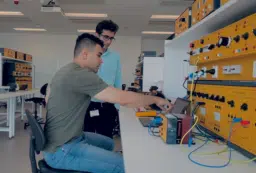With salinity fears escalating across Australia, researchers have developed an innovative method that uses microwave energy from NASA’s aircraft and Space Shuttle system to accurately map dryland salinity.
Mr. David Bruce with colleagues from the University of South Australia and CSIRO have developed a way to use pulses of microwave energy to measure soil moisture. Mr Bruce presented his findings today (5 May) at ScienceNOW! in Melbourne.
“If we can map higher soil moisture, that’s a good indication that water tables have risen in an area and that salinity may be a problem,” Mr Bruce says.
“We combine the information gained from NASA’s aircraft and Space Shuttle with infrared satellite imagery, computer-based geographical information systems and other computer models to determine the areas at greatest risk from dryland salinity.”
The researchers have been successful at mapping where salinity is occurring in the Eastern Mount Lofty Ranges, not far from Adelaide.
“Without the microwave data supplied from NASA’s visits to Australia in 1993, 1996 and 2000, this would not have been possible,” says Mr Bruce.
Researchers estimate that every day Australia loses the size of a football oval to dryland salinity.
Dryland salinity is caused when salts in the soil are brought to the surface through rising water tables. Water tables can rise when deep-rooted vegetation is removed from the landscape.
“If we can better estimate areas at increasing risk from dryland salinity, then this will benefit land managers trying to fight this problem,” Mr Bruce says.
The innovative microwave technology measures the time that microwave pulses take to bounce off the land’s surface and return to the radar antenna on the NASA aircraft and Space Shuttle.
“The strength of the returned microwave pulses helps to determine the amount of soil moisture on the earth’s surface,” says Mr Bruce.
The shape of the earth’s surface can distort these readings, and researchers were able to overcome this problem by having two antennae a small distance apart on the NASA receivers.




 Fresh Science is on hold for 2022. We will be back in 2023.
Fresh Science is on hold for 2022. We will be back in 2023.